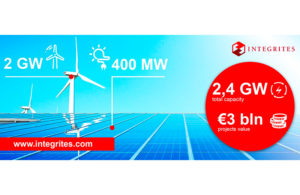Oleksiy Feliv, Managing partner, INTEGRITES
It took over eight months for the Ukrainian Government and the investors into Ukraine’s renewables to reach a much-anticipated compromise. The solution came up on June 10, 2020 as a memorandum of understanding signed by the Shmyhal’s Government, the European-Ukrainian Energy Agency (EUEA) and the Ukrainian Wind Energy Association (UWEA). Being the result of long negotiations, the memo is the first step to get the industry out of the deadlock. To make it really work, decisive legislative efforts should follow in the nearest future
Since autumn 2019, Ukrainian renewable energy sector has been in turmoil. Indeed, the growing number of the commissioned facilities and projects under development put financial pressure on the Guaranteed Buyer. However, the real reason was complex because a number of factors came together: the new electricity market introduced on July 1, 2020 plus the new Government and the new Parliament members with their own view on the green energy sector and how it should be “punished” for high feed-in tariffs.
Only after the new Government under Mr. Shmyhal stepped into the negotiations, the industry got a feeling that a deal could be reached. And after two months of negotiations in quarantine conditions, it indeed was. According to the memorandum, the investors are ready for a cut by 15% for solar and by 7.5% for wind projects. For new projects to be commissioned from 2020 on, the tariff cut will be 2.5%, additionally to the scheduled cut of 25% for solar and 10% for wind.
Solar plants under the feed-in tariff can be commissioned by July 31, 2020 only, and wind parks – within three years from the date of the pre-PPAs signed in 2019.
In exchange, the Government took the obligation to settle the existing debts to the alternative energy producers. Another commitment is to set energy quotas in order to trigger the long-awaited green auctions. Further on, the Government has to put hard guarantees into the law on “no more retrospective changes” and improve the bankability of the PPAs.
Reaching an understanding between the Government and the industry on the cut of feed-in tariffs seems to be a unique experience. Unlike in other countries, the Ukrainian Government as well as the Office of the President went the road of a compromise which should preserve Ukraine from many investment arbitration claims and an inevitable drop in the investment and credit ratings. As an example, radical changes on the feed-in tariff in Spain resulted in 40 investment arbitrations with total value of about EUR 8 billion, most of which are still under way.
Notably, as any compromise, the presented solution can’t make everybody happy. Some industry players, including foreign ones, do not support the memorandum and insist on a better deal. The conditions of the memorandum do not deprive these players of the right to go to court or initiate arbitral proceeding. I personally hope that they will avoid this option, as a deal is always better than a dispute. To persuade the opposers, the Government has to quickly implement the promises given in the memorandum, to work closely with the state banks and the IFIs exposed to renewables, in order to secure the restructuring of the loans and make the deal available to those who can’t accept it now.
It is crucial to convert the memorandum into the law still before July 31, 2020, following a swift implementation of the secondary legislation that will secure timely payments. In the best case scenario, this might become the biggest success of Ukraine in maintaining the favorable investment climate and positioning the country as a reliable partner.

